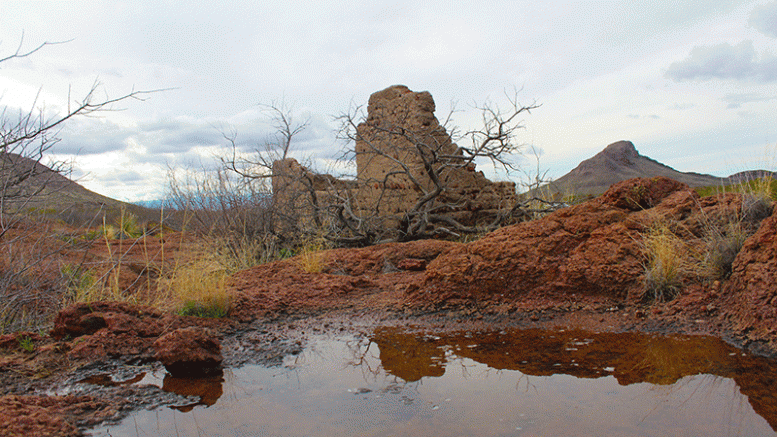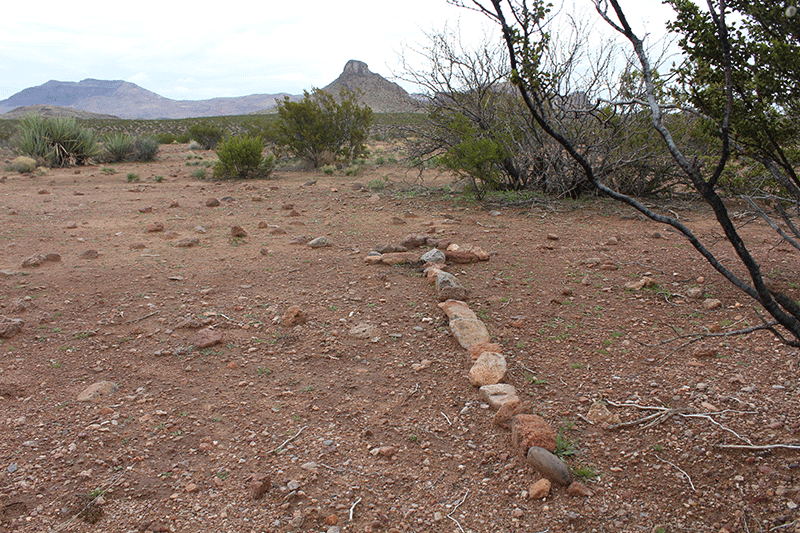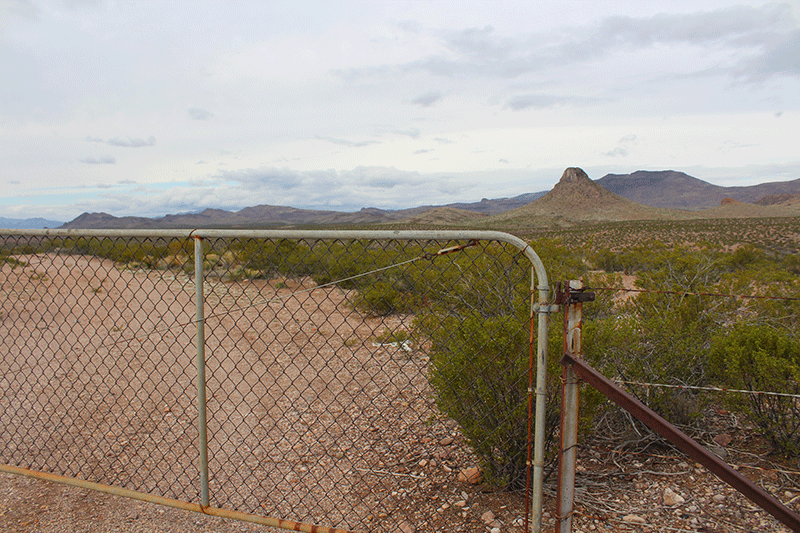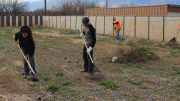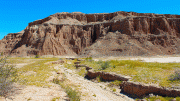By Brooke Curley
GRAHAM COUNTY – The remnants of a building and holding facility stand in the middle of the desert. Local historians cannot identify its tired remains, but perhaps one of Gila Valley Central’s readers can.
Like many mysteries, there are multiple clues to the origins of this strange building. The first is its location on a dirt road off U.S. Highway 70, 22 miles from Safford just past milepost 361. The building isn’t located on the highway or even the old highway. Instead, it is down a winding dirt road that crosses an empty wash.
What makes the building unique is its holding tanks and two semi-basements. These cement basements and holding tanks indicate the buildings were some sort of production or transportation facility. However, the location of the buildings seems to cancel out these possibilities since it is not on the main road.
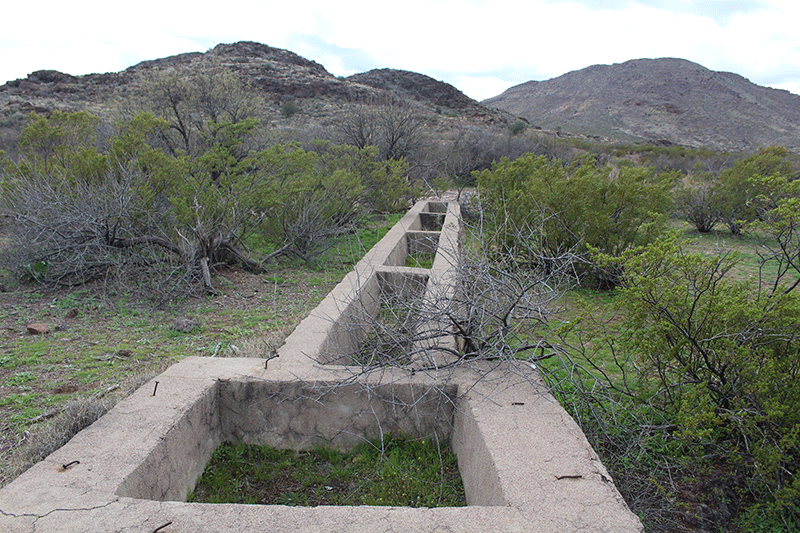
Brooke Curley Photo/Gila Valley Central: These holding tanks resemble feeding troughs, however, there appears to have been something bolted to them at one point.
Jay Rasco, who alerted Gila Valley Central to the existence of the strange structure, said he first discovered the remains decades ago.
“I first came on this probably 35 to 45 years ago, and I’ve been trying to find out ever since what it was,” Rasco said. “I haven’t found anybody that knows.”
A former beekeeper and local historical and environmental tour guide, Rasco has explored many of the vast deserts and river washes. However, in all his time in the Gila Valley, he has not found a single individual who knows the answer to this particular riddle.
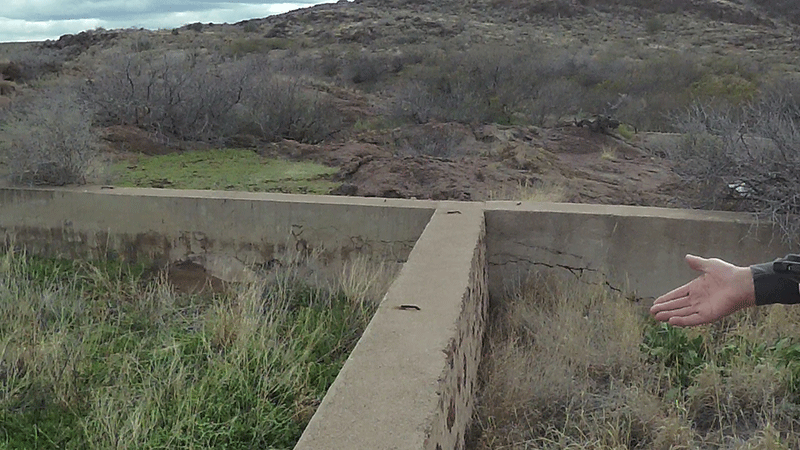
Brooke Curley Photo/Gila Valley Central: These are several more sub-basements, which, according to Rasco, were not finished well enough to be housing structures.
Because of the size of the holding tanks, Rasco considered the old building may be the remnants of some
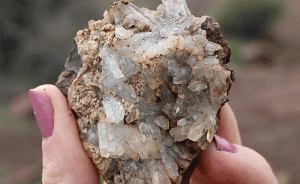
Brooke Curley Photo/Gila Valley Central: This rock was identified as being quartz crystals.
sort of mining facility. Gila Valley Central took photos of several geological findings in the area and presented them to local geological enthusiasts.
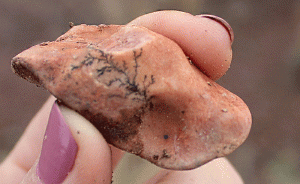
Brooke Curley Photo/Gila Valley Central: This piece was identified by local geologists as being dendrites.
A local geologist identified the rock on the left to be dendrites, which is often mistaken for fern fossil. The deposit on the right was identified as being quartz crystals. These crystals are common in the earth’s crust, but the larger ones pictured to the right are rare to find simply laying on the ground. Although the geological findings were interesting, the geologist concluded the minerals pictured here were not necessarily indicative of mining.
Aside from the fragments of rusted tin roofing, glass, and shotgun shells, there are very few clues to the original nature of the buildings. Although some may think that the last standing walls are made of adobe, Rasco insists that they are comprised of cheap cement and local rock.
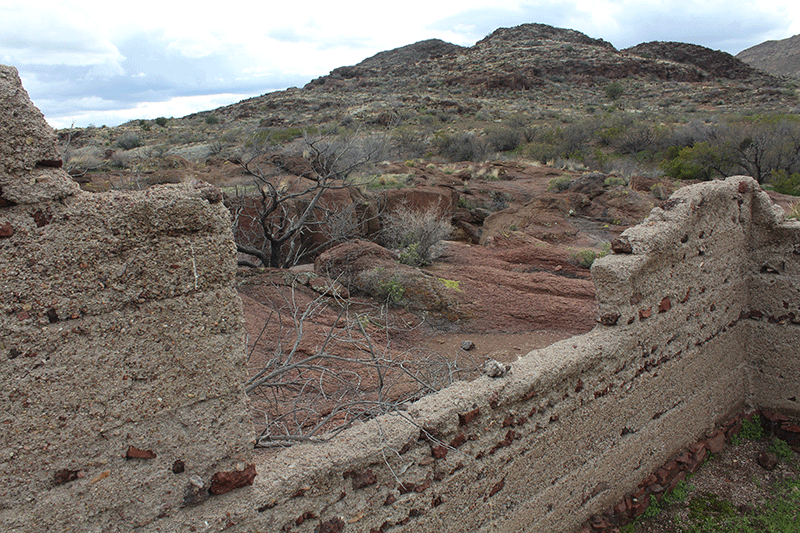
Brooke Curley Photo/Gila Valley Central: What might have been a house in years past is now just shattered walls in ruins looking out at a dry wash.
Although it is plainly made by recent humanity, the known origins of the buildings have already been apparently lost to time. As the Arizona weather lashes down on the man-made structures, one might be reminded of a poem by Rudyard Kipling titled, Letting in the Jungle.
Letting in the Jungle
Veil them, cover them, wall them round–
Blossom, and creeper, and weed–
Let us forget the sight and the sound,
The smell and the touch of the breed!
Fat black ash by the altar-stone,
Here is the white-foot rain
And the does bring forth in the fields unsown,
And none shall affright them again;
And the blind walls crumble, unknown, o’erthrown,
And none shall inhabit again!
If anyone knows the answer to this mystery, message Gila Valley Central or leave a comment in the comment section.

